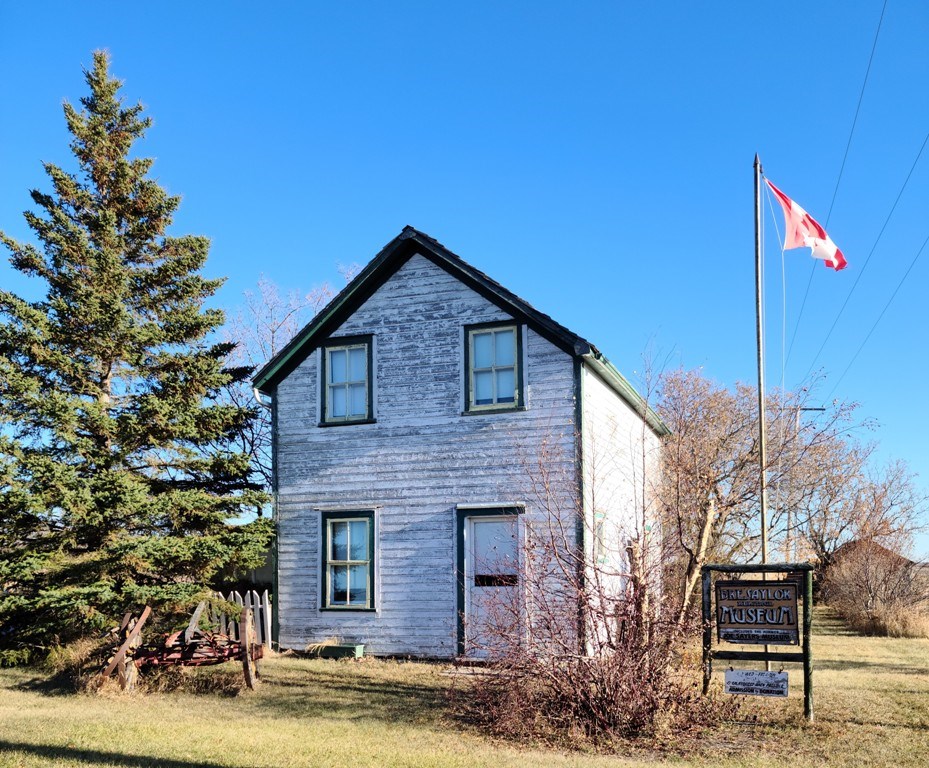In 1885, just before the North-West Rebellion started, Joe McKay got a job as the farm instructor on Sweetgrass Reserve. Joe, his wife and two daughters arrived and moved into their accommodation on March 12. While the family was sleeping on the night of March 27, one day after the first shot was fired at Duck Lake, their home was invaded. After an angry encounter, the family was warned to leave and their horses were taken. Eventually someone loaned them a small canoe to cross the ice-filled Battle River and they made their way to the Bresaylor settlement where Joe’s wife’s brother David Poitras lived.
Years later one of their daughters, Ann Flora, recounted their ordeal to the Prince Albert Herald. “As we plodded on, our feet broke through the snow, sometimes to our knees in water.”
But their ordeal had only just begun.
Conditions in the Bresaylor settlement were tense. Riel’s representatives were trying to get the support of the Bresaylor people. Chief Poundmaker visited the settlers while the McKays were there and smoked the peace pipe with Joe, but Poundmaker could not guarantee their safety.
“It was nearly sundown on Easter Day when we were told to come at once to the river. It was running very thick with ice from bank to bank, and Father said that to put a frail boat in the water would mean death to all of us. The old priest (Cochin) said it was our only chance,” Ann told the Herald.
Anyone familiar with the North Saskatchewan River in the spring would be horrified at the prospect facing them. Father Cochin also advised the McKays not to stop at Battleford, as they might be mistaken for rebels. The family got into the boat and were soon carried swiftly downstream.
“The boat was spun around and pushed from side to side between the huge floes of ice. The boat was too small and rode low in the water. We were very frightened. Father pushed the craft with an oar, in and out among the cakes of ice. He tried to work his way toward the far bank. Several times the boat was lifted almost clear of the water; it became jammed between ice floes. As Father worked to keep the boat from being overturned, I looked back and saw the figure still kneeling on the wet sand. This was the last I saw of Father Cochin.”
Miraculously the family reached the other side and managed to pull the boat up on the bank, taking shelter among the willows. For nine days they hid in the willows shivering, for they dared not light a fire, fearing they would be discovered. They only had a bit of bannock among them.
When the river was about to open, they were noticed by hostile natives. Somehow they managed to push off from shore and miraculously a channel opened so they could escape their pursuers from both sides of the river.
Their ordeal was not yet over. That night the McKays floated past Battleford, thinking to land at Fort Carlton. They didn’t know that the fort had been vacated and burned. A man who had taken flour from the fort gave them bread he had made from it, but it made them ill. The flour had been contaminated with coal oil by the Mounties before they left.
Further downstream, the family stopped to ask a woman on shore for food. When she asked their name and heard Joe McKay, she told them the rebels were looking for him. The Joe McKay she meant was the one who had fired the first shot at the Duck Lake skirmish. The family continued downstream with no food.
They finally reached safety at the Roman Catholic mission at Prince Albert. It had been 12 days since they had set out, having had only two small feedings of bannock and chewed some spruce gum. An attempt at eating grease used for caulking on the boat also made them sick.
As an interesting note, Ann Flora McKay later married the other Joe McKay.
This account shows that the Métis were regarded by some on both sides as relatives, friends, neighbours and, in some cases, the enemy. Read next week’s article “Caught in the middle.”
Check out the Bresaylor Heritage Museum Facebook page for more information. The museum is open by appointment only from June 9 to Aug. 31. Please phone 306-895-4813.




